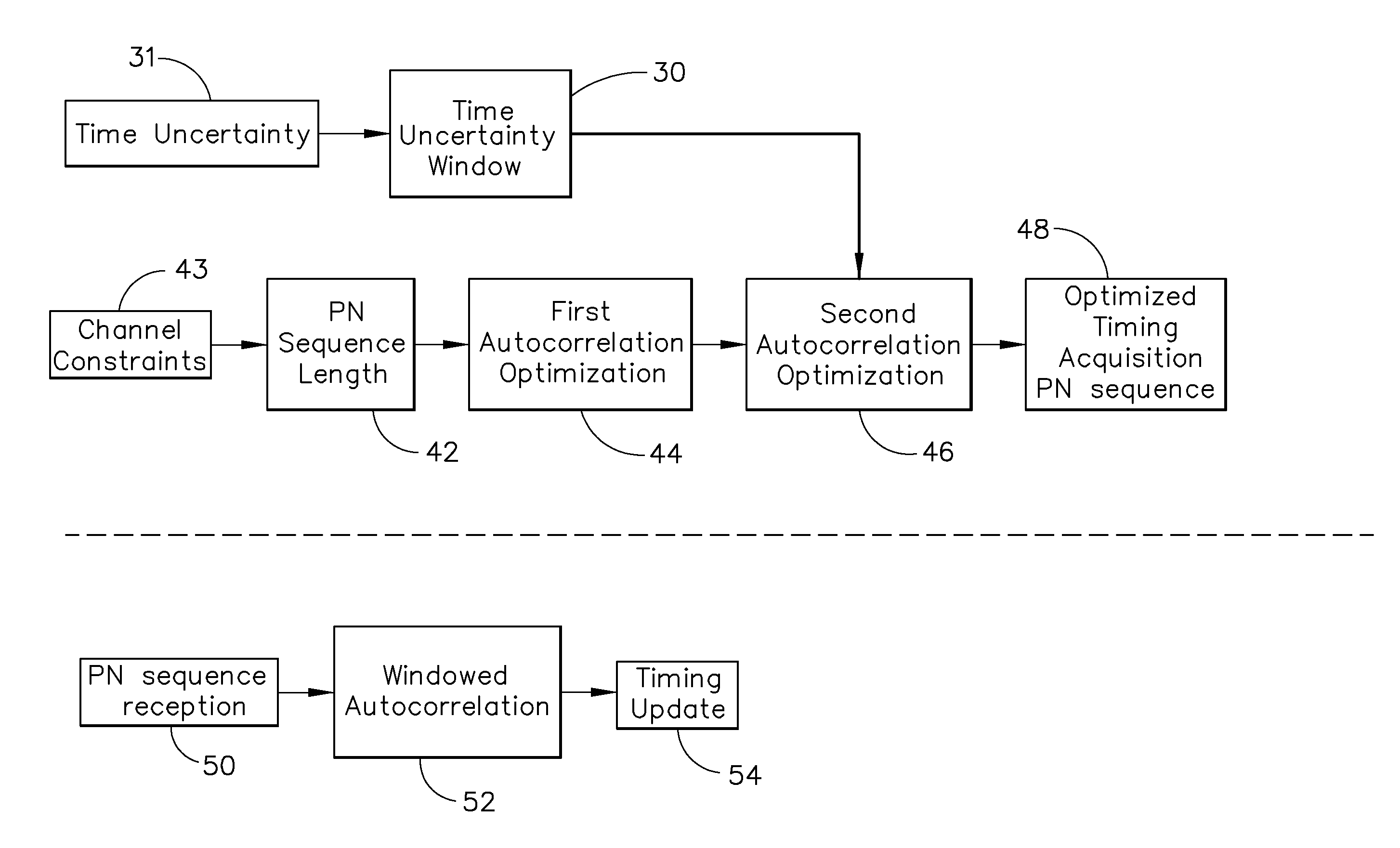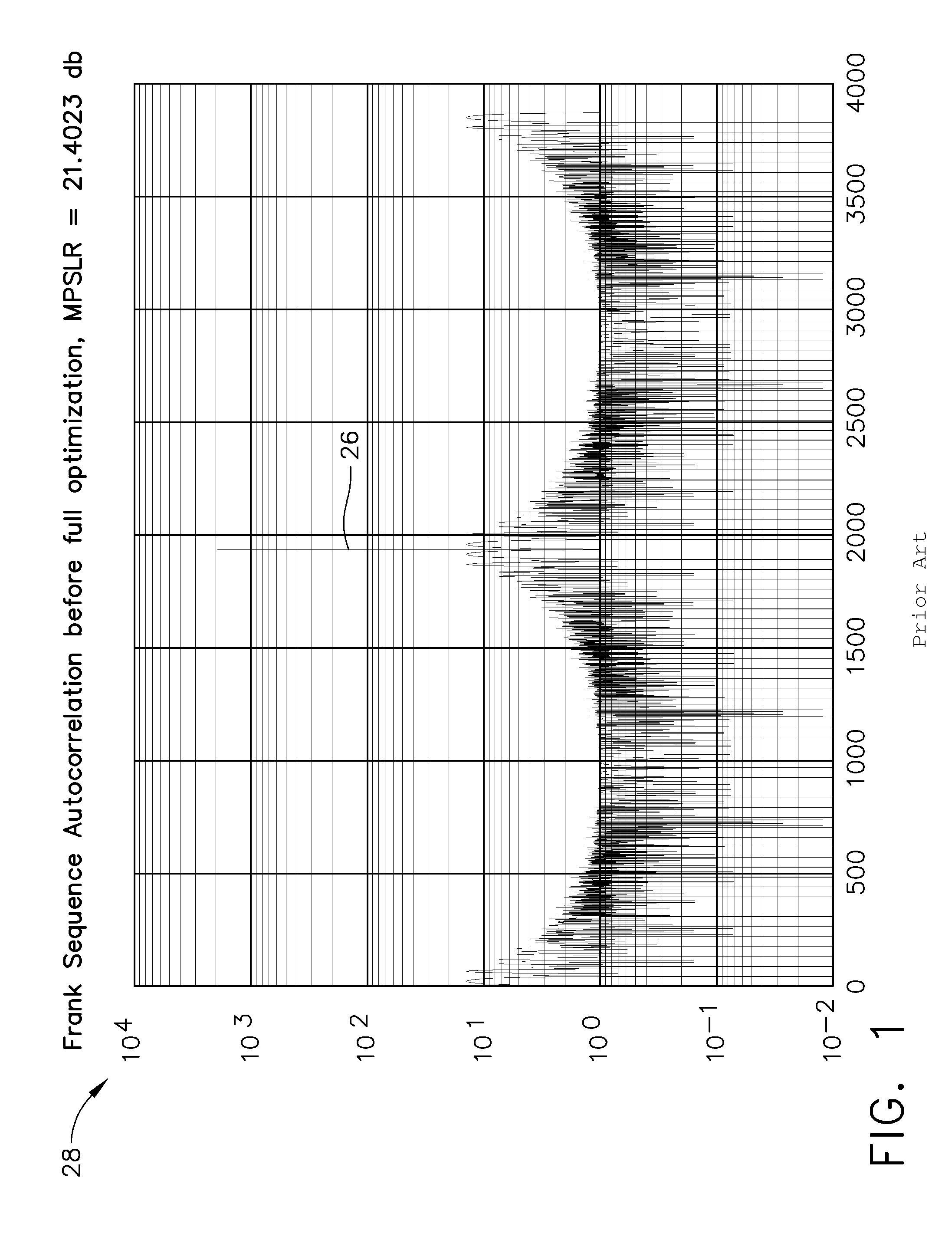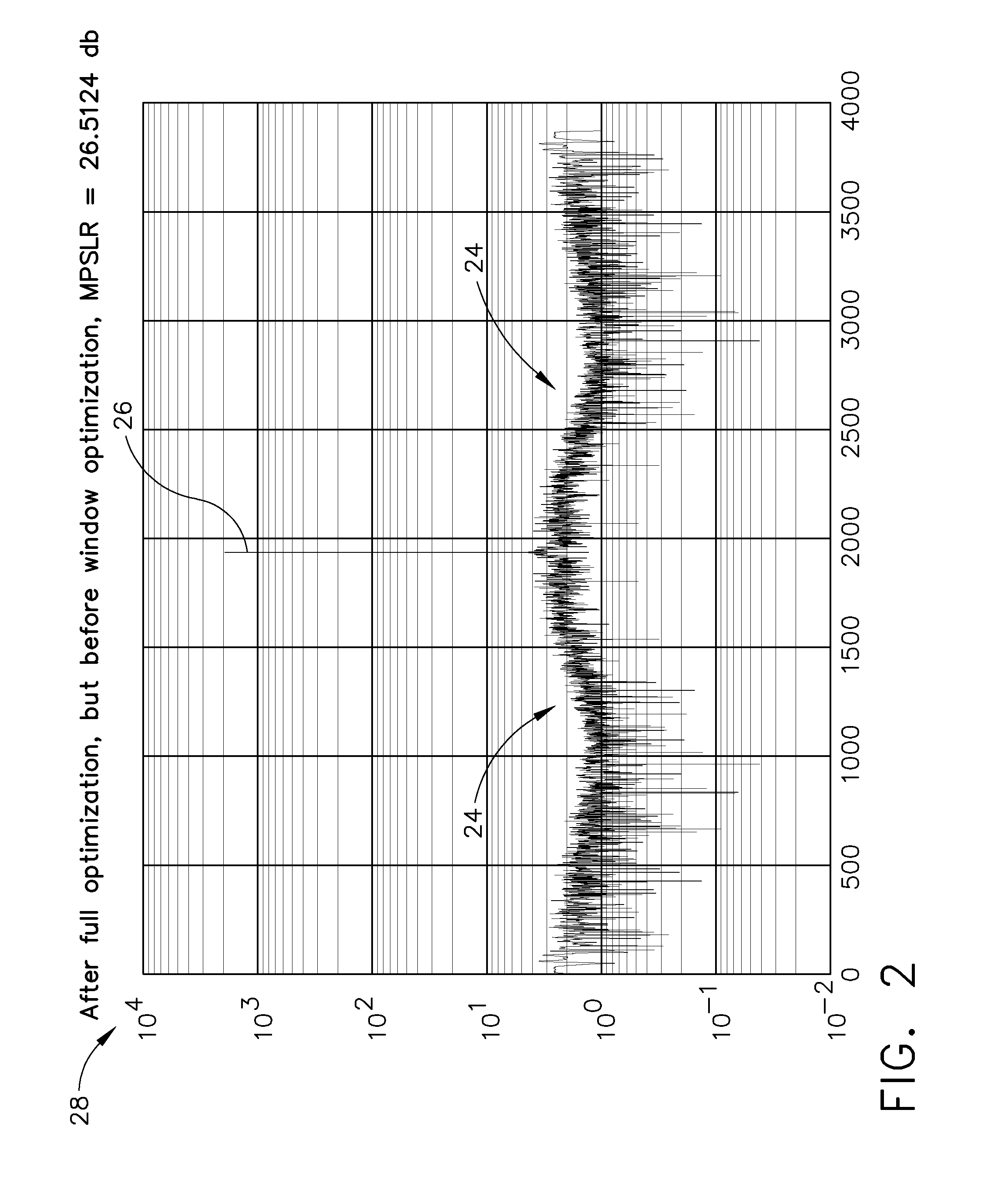Method for fine timing acquisition
a technology of fine timing and acquisition method, applied in the direction of synchronisation signal speed/phase control, amplitude demodulation, digital transmission, etc., to achieve the effect of reducing overhead, reducing the number of bits required, and more efficient physical layer communication and networking protocols
- Summary
- Abstract
- Description
- Claims
- Application Information
AI Technical Summary
Benefits of technology
Problems solved by technology
Method used
Image
Examples
Embodiment Construction
[0026]The timing acquisition process of the present invention includes selecting an initial sequence of complex numbers having preferred autocorrelation properties, and applying a two-step method to the initial sequence of complex numbers to enhance the autocorrelation properties of the initial sequence within a predetermined window defined by the bounded timing uncertainty of the system.
[0027]The timing acquisition process of the present invention preferably uses one or more computational or analytical processes to either generate a timing signal for transmission or detect a timing signal at a receiver. In one embodiment, the computational or analytical processes can be implemented by software stored in a memory device and executable by a microprocessor. The computational or analytical processes may also be implemented and executed using digital and / or analog hardware.
[0028]The system is implemented by selecting a complex number sequence (these would typically lie on the unit circl...
PUM
 Login to View More
Login to View More Abstract
Description
Claims
Application Information
 Login to View More
Login to View More - R&D
- Intellectual Property
- Life Sciences
- Materials
- Tech Scout
- Unparalleled Data Quality
- Higher Quality Content
- 60% Fewer Hallucinations
Browse by: Latest US Patents, China's latest patents, Technical Efficacy Thesaurus, Application Domain, Technology Topic, Popular Technical Reports.
© 2025 PatSnap. All rights reserved.Legal|Privacy policy|Modern Slavery Act Transparency Statement|Sitemap|About US| Contact US: help@patsnap.com



